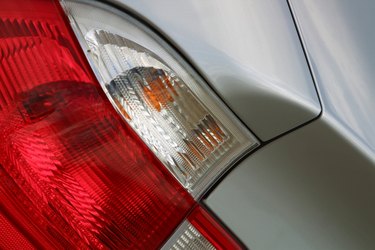
Tail lamps for cars, trucks or motorcycles can be easily checked for proper operation using a standard multimeter. These tools allow you to diagnose problems with vehicle electrical systems by determining where the problem with your lights may be at. Rather than just checking the terminals inside the tail lamp, it's a good idea to remove the tail light housing and check the harness, as well. This will let you determine how far back in your electrical system the problem may be located.
Step 1
Unbolt the tail light housing from the vehicle with either a 1/4-inch drive socket set or a screwdriver. If the tail light is on a motorcycle, remove the tail light lens. The housing does not need to be removed.
Step 2
Unplug the light bulb from the light socket and inspect the filament for damage. If the coiled metal filament inside the bulb is broken, there is no further need to test the tail light. A new light bulb will be sufficient for the repair.
Step 3
Ask an assistant to hold down the brake pedal on the vehicle to activate the electrical system. If the vehicle has integrated turn signal-tail lights, you can set the emergency flashers or turn on the car's ignition and headlights. On motorcycles, the accessory power must be turned on at the ignition key and the foot brake held down to activate the light.
Step 4
Touch the black probe for the multimeter to the metal case of the tail light. The black probe is for connecting to the ground.
Step 5
Press the red probe for the multimeter against the electrical connections inside the light bulb socket. If the vehicle is a 12-volt system, the multimeter should register 12 volts. Vintage cars often ran on 6-volt systems and commercial trucks routinely work on 24-volt systems. If the multimeter does not register any power, touch the probes to the wires protruding from the back of the socket. If it reads at the back of the socket, the socket connection is bad and needs to be replaced. If it does not, move on to checking the vehicle's fuse box, which can be visually inspected without the use of a multimeter.